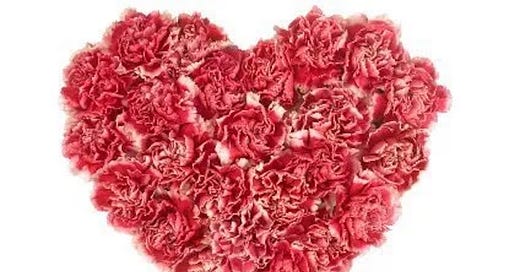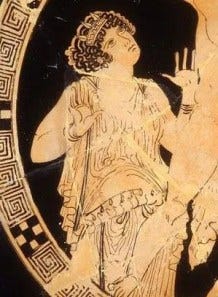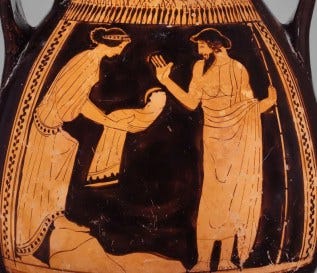The person who initially was most active in opposing the celebration of Mother’s Day is the very person who started this holiday in the US.
How did that happen?
Anna Jarvis’ mother died in 1905, and in her honor, Anna held a memorial in 1908 in Grafton, West Virginia. She continued to campaign for national recognition of this day for all mothers through the assistance of John Wanamaker and the efforts of Bethany Temple Presbyterian Church in Philadelphia. The first state to recognize Mother’s Day was her own, West Virginia, in 1910. President Woodrow Wilson proclaimed Mother’s Day the “second Sunday in May” in 1914.
The spelling was significant: Anna Jarvis did not spell it “Mothers’ Day” because she intended, as she said, it should “be singular possessive, for each family to honor its mother, not a plural possessive commemorating all mothers of the world.” Nevertheless, in more modern times, both “Mothers’ Day” and “Mother’s Day” appear as names for this holiday.
Carnations for Mother’s Day
Although there had been previous efforts to start a Mother’s Day associated with pacifistic mothers during the American Civil War, some organized by Anna’s mother, it was not until the efforts of Anna Jarvis in the early 20th century that this celebration caught on widely. This holiday is associated with carnations, flying the American flag, and churchgoing.
White carnations were Anna Jarvis’ mother’s favorite flower, and 500 of them were delivered at the first celebration in 1908 by Anna Jarvis. Churches would traditionally distribute white carnations to mothers on this day. Due to the shortage of white carnations, florists developed the idea of a red carnation if one’s mother was living and white if not. This was promoted widely and is now a common part of the celebration.
Ancient History of Mother’s Day
While the American history of this holiday is only a century old, outside the US, countries have adopted this holiday to match previous secular or sacred holidays associated with mothering.
One example from Greek antiquities is told in Hesiod‘s Theogony (birth of the gods). The primordial earth deity Gaia and the Titan of the sky Uranus – progenitors of the Titans – had a daughter, Rhea.
Rhea was the wife (and sister) of the Titan Cronus (time) and was the mother of the Olympian gods and goddesses: Zeus, Hera, Hades, Poseidon, Demeter, Hestia, etc. The mother cult was initially celebrated in Crete, where myth suggests Rhea gave birth to Zeus to hide him from Cronus, who was swallowing his children, to prevent them from overthrowing him as he did his father, Uranus.
Ancient Romans celebrated Magna Mater or “Great Mother” in honor of Cybele, a mother goddess and likely equivalent of the Greek Rhea, around March 22-25. However, the celebrations were notorious enough that followers of Cybele were later banished from Rome.
In the pre-Christian British Isles and Celtic Europe, the goddess Brigid, and later St. Brigid, who shared her name, were honored with a spring Mother’s Day, connected with the “first milk of the ewes.”
Christian traditions surrounding Mother’s Day
During Christian times in the UK and parts of Europe, people would return to their local “mother church” for a special service before Easter, known as Mothering Sunday, on the fourth Sunday in Lent. In some Catholic and Orthodox countries, it is associated with St. Mary and is tied to the day she presented her son Jesus at the Temple of Jerusalem (February 2). In Eastern Europe, it is sometimes associated with International Women’s Day.
Opposition to Mother’s Day
So, why did Anna Jarvis, who remained unmarried and childless all her life, oppose the very holiday she had started to honor her mother? Within nine years of the first official Mother’s Day in the US, it had become so commercialized that she spent the remainder of her life and wealth fighting what she believed was an abuse of the celebration of Mother’s Day. In 1948, she was arrested for protesting against this commercialization, saying she wished she had never started the day,
“because it became so out of control,” she said
Mother’s Day Gifts
Nevertheless, Mother’s Day in the US is the second-largest consumer spending holiday after the Winter holidays, expected to be $34.1 billion this year, according to the National Retail Federation, with an average shopper spending $259 this year:
Jewelry: $7 billion
Special outings: $5.9 billion
Electronics: $3.5 billion
Flowers: $3.2 billion
Greeting cards: $1.1 billion
We don’t see this kind of spending on Father’s Day.
Bill Petro, your friendly neighborhood historian
billpetro.com
Subscribe to have future articles delivered to your email. If you enjoyed this article, please consider leaving a comment.







I believe that even though there is a dedicated day, 365 days is a mother's day. Thank you for sharing the history of Mother's Day.